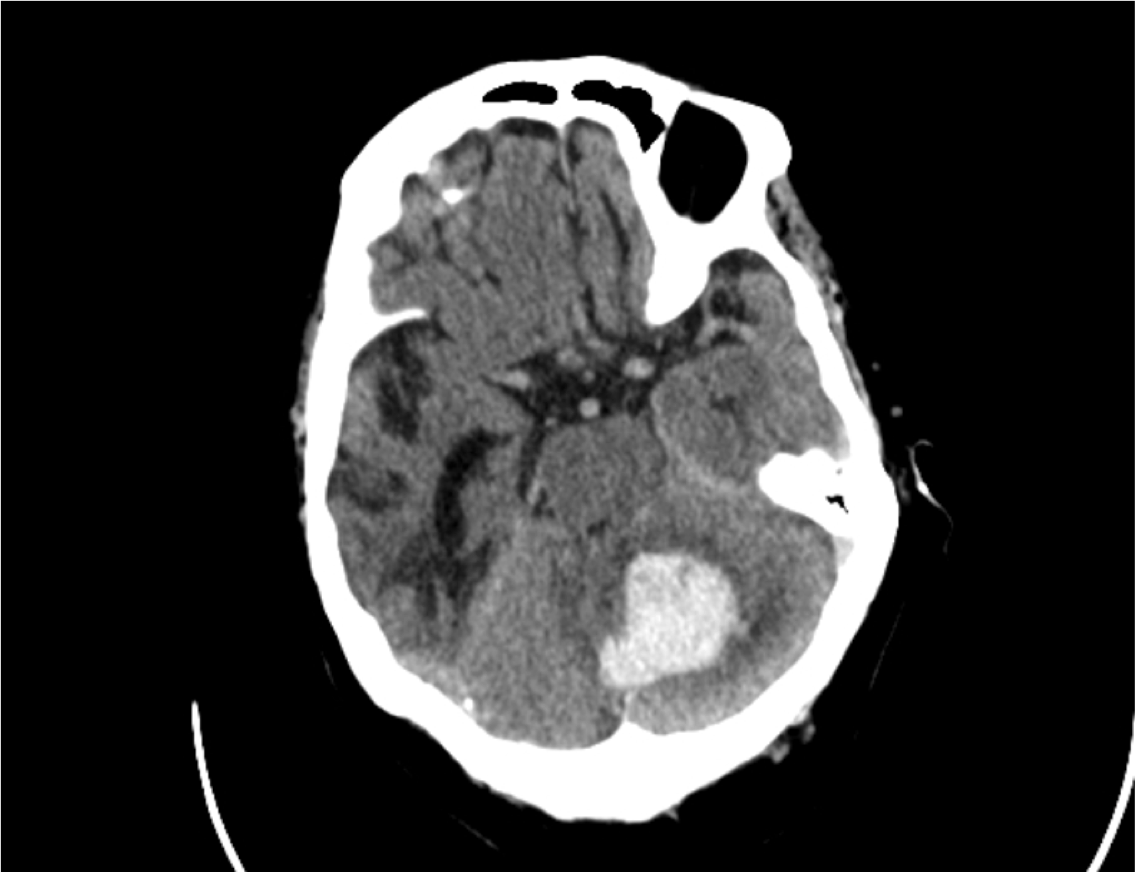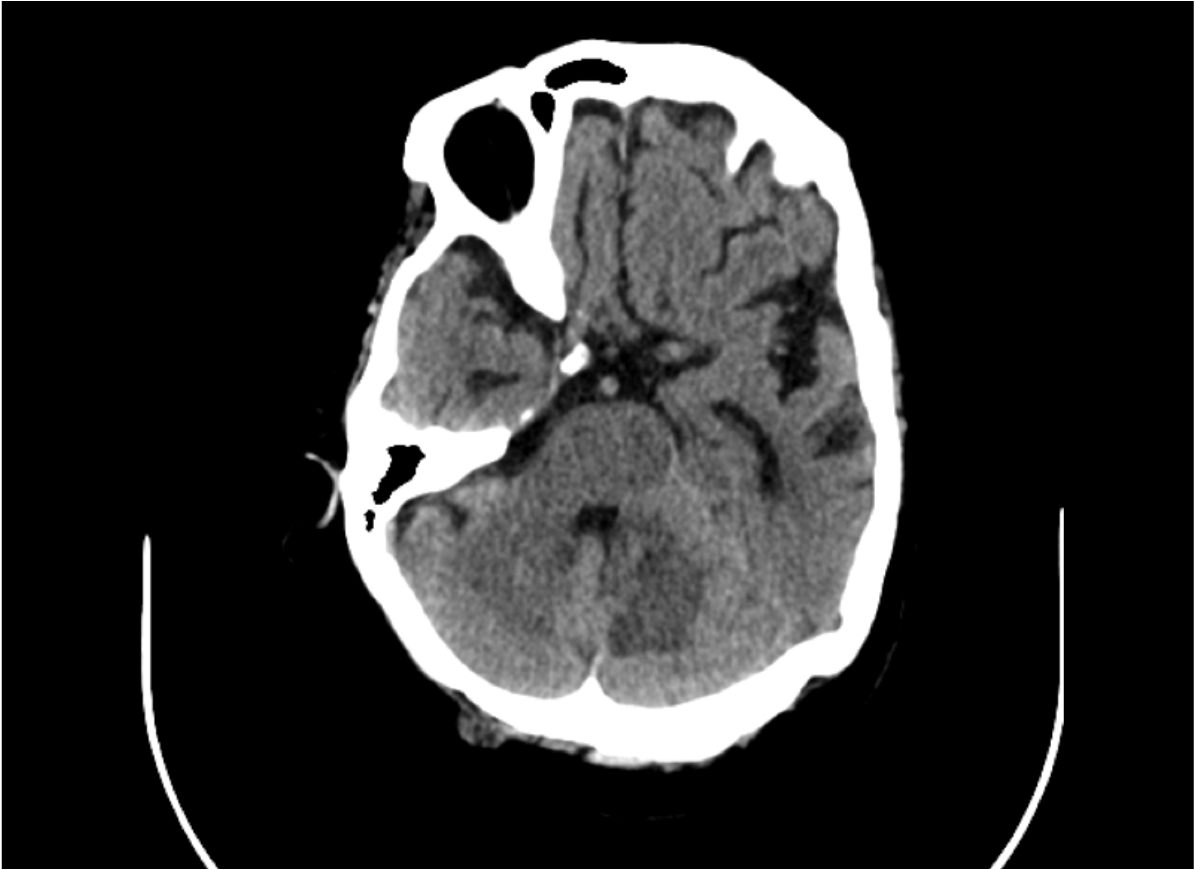Category: Dystonia: Pathophysiology, Imaging
Objective: To report the case of a patient developing hemidystonia in the course of cerebellar hemorrhage.
Background: About 1-4% of strokes may include movement disorders, with dystonia being the second most frequently observed. In the vast majority, post-stroke dystonia arises with lesions of the basal ganglia.
Method: Case report. Video content showing the dystonia included.
Results: A 75-year-old woman with a history of hypertension, dyslipidemia, atrial fibrillation on warfarin and ischemic stroke in 2015. She was admitted to the emergency room complaining of nausea, vomiting, dizziness and gait imbalance that started in the previous 24 hours. On admission, she was dysarthric, had a MRC Grade 3 left hemiparesis with hypotonia and ipsilateral dysmetria on finger-to-nose heel-to-knee tests. Her gait was broad-based with a tendency to fall to the left side. Head CT showed hemorrhage in the left cerebellar hemisphere. Hypocoagulation was reversed and the patient was admitted for surveillance and blood pressure control. During hospitalization, a dystonic posture of the left hand and foot was observed (particularly noticeable when walking). Upon discharge, the patient showed clinical improvement and was able to walk with unilateral support while maintaining left hemidystonia.
Conclusion: We report a case of dystonia secondary to a cerebellar lesion. Although this constitutes an atypical presentation, there is mounting evidence of an important role of the cerebellum in the physiopathological circuits of dystonia.
To cite this abstract in AMA style:
L. Costa, J. Pinto, C. Machado, I. Amorim. Hemidystonia of cerebellar origin [abstract]. Mov Disord. 2023; 38 (suppl 1). https://www.mdsabstracts.org/abstract/hemidystonia-of-cerebellar-origin/. Accessed April 2, 2025.« Back to 2023 International Congress
MDS Abstracts - https://www.mdsabstracts.org/abstract/hemidystonia-of-cerebellar-origin/


